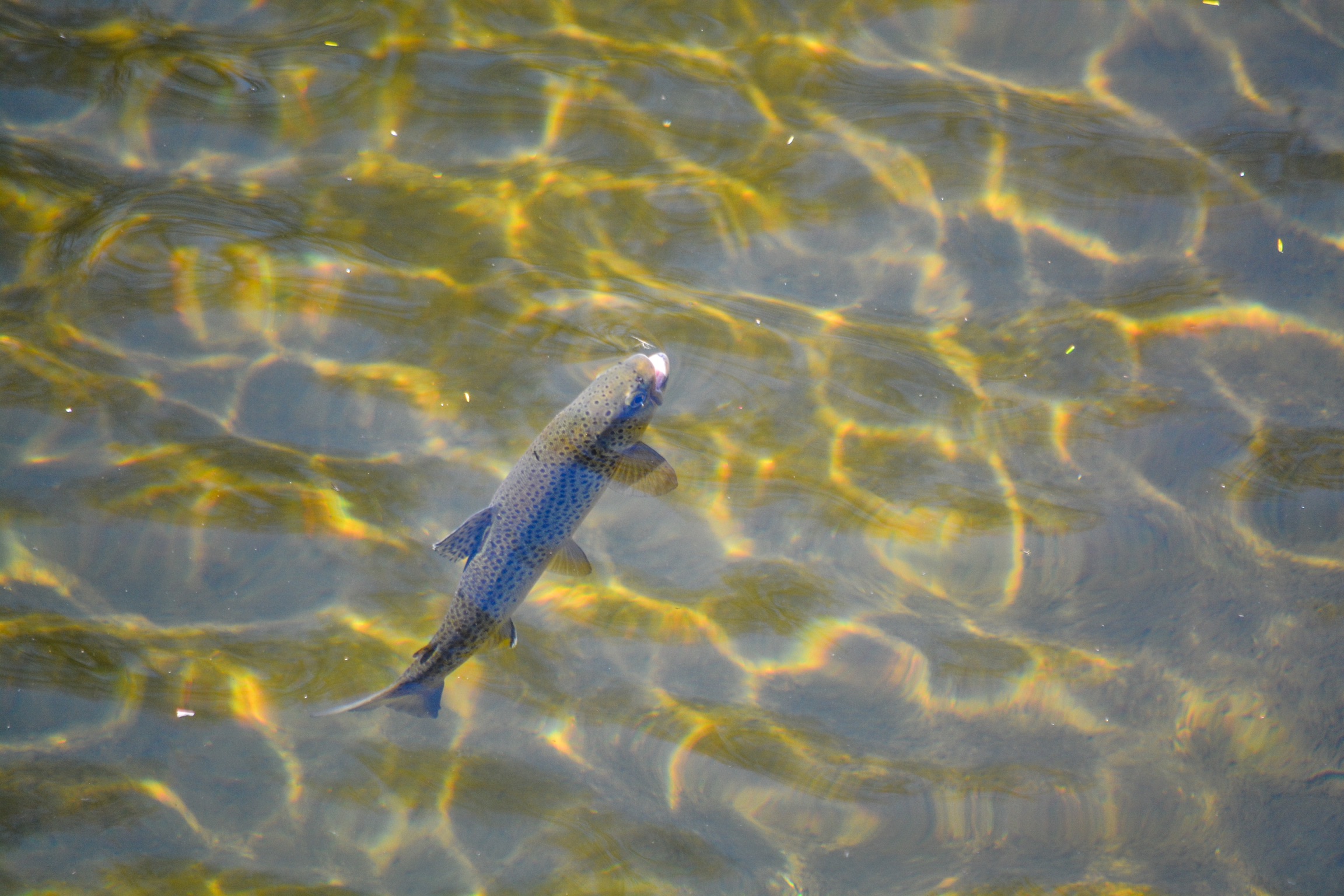Sometimes all it takes to get a fish to eat is a quick changing of your flies. Often times if you are fishing a certain area, fish can become “educated” about certain fly patterns they see movement in front of their face on the daily, or the fish simply don’t want to eat what you are throwing. The best way to alleviate this issue is to keep changing your flies until you find the pattern that works. To help you out, we’ve gathered a few of the major cues that it might be time to try a new pattern!
Feeding Fish Are Ignoring Your Presentation

Whether its due to a large number of bugs on the surface or just picky fish, if you notice fish rising or feeding just next to your flies with no familiar tug at the end of it, it may be time to switch your flies. Trout have exceptional eyesight and can make out the faintest details in what they plan on feeding on, and if your fly doesn’t meet their inspection standards, they simply won’t eat. If you notice this happening to you, it might be time to try a different pattern, size down your fly, or tie on lighter tippet to fool those smart fish.
Fish Spook When Your Fly Lands

We’ve all been there before, you make the perfect cast and the moment your fly hits the water, your target spooks off to go hide in the nearest deep pocket. If you notice this happening, your best bet is to switch flies to something lighter in weight, or smaller to reduce your fly’s impact on the water.
You See a Hatch Starting

Heavy hatches are one of our favorite moments on any trout stream. Typically the first signs of a hatch starting are fish feeding on emergers sporadically. Then, as the hatch progresses more and more fish will begin to cash in on the free protein floating overhead. But before you get over-eager and start laying out casts, you should first try to identify what’s hatching. The easiest way to do this is by sight (if the bugs are large enough), or by snagging 1 or 2 flies out of the air and doing your best to match them with a dry in your fly box. If you don’t start getting hits on your first choice in say 10-20 drifts, it’s probably time to change up your fly to the next closest pattern.
Your Fly is Beat Up

When you’ve got a pattern on the end of your line that has been crushing fish all day long, that fly is going to be taking some abuse. Even trout can be tough on a fly, and as they get chewed up, they will start to lose some of the materials and design features that were responsible for so many fish wanting a taste. If you notice your fly starting to come unraveled, or its missing a leg or 2, it may be time to tie on a new fly.
You Haven’t Had a Bite in an Hour

Now, this may seem like a no-brainer, but it’s easy to get caught up in the moment and frustration and simply fish the same pattern all day. If you’ve ever watched an experienced angler or guide while they fish, odds are they are switching flies every 5-10 minutes until they get the reaction out of the fish they want. If its been a while since you last felt the tug of an eat at the end of your line, its probably time to switch up your flies, take a deep breath and get back to casting!
https://postflybox.com/blog/2019/09/16/weekend-chase-seasonality/
https://postflybox.com/blog/2019/09/12/how-to-prepare-for-an-off-the-grid-fishing-adventure/
https://postflybox.com/blog/2019/09/05/support-bahamas-recovery-three-ways-to-help-with-hurricane-dorian-relief/

Dan Zazworsky’s passion is sharing his love of fly fishing with anyone that will listen, read or watch. You can find him exploring new waters every day while chasing any fish that will eat a fly!







2 thoughts on “How to Know When It’s Time to Switch Flies”